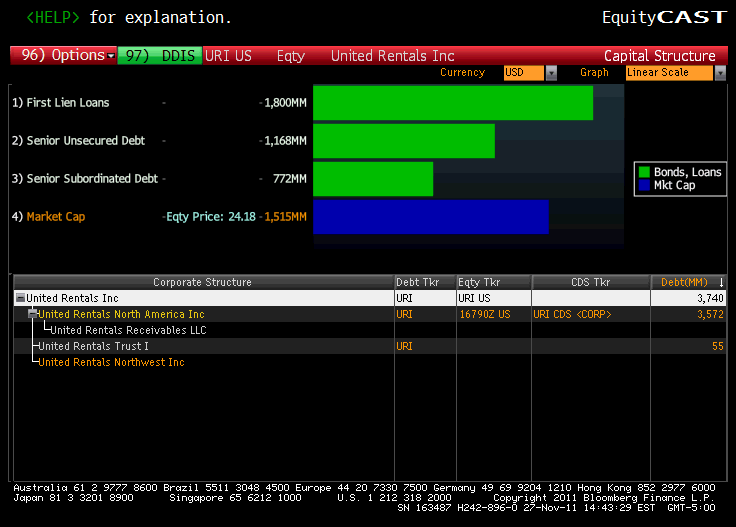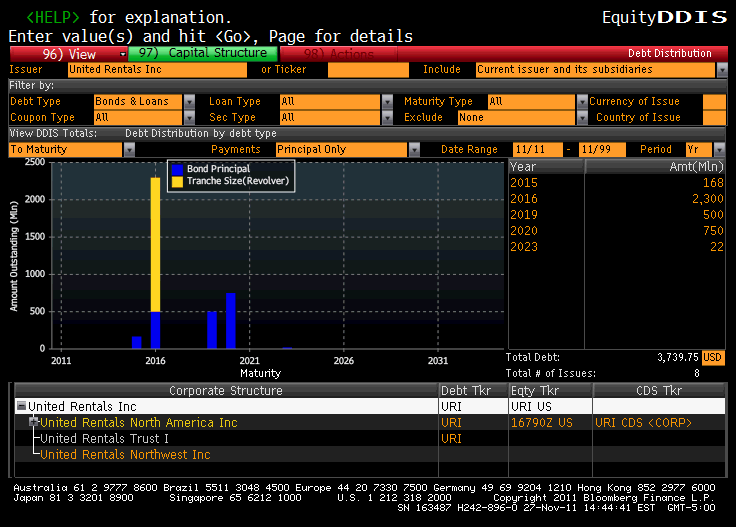Structural analysis involves identifying where the debt resides within the capital structure. First it is necessary to determine the corporate structure. Some companies have a straight forward corporate structure where all the debt is issued from the same entity as where the operating assets reside. Other companies will have a holding company / operating company structure. Still others may have financing subsidiaries or international operations that also issue debt.
The goal of structural analysis is to determine what assets back your bond and how much debt have priority claims. One way to find out the corporate structure along with the amount of debt for each entity is the CAST function on Bloomberg. Below is the corporate structure and debt amounts for United Rentals (URI).
Also see Subordination Analysis.
As you can see, the unsecured bonds of URI sit behind $1.8B of first lien secured loans but ahead of $772m of subordinated bonds. A credit analyst should take this into account. On average, subordinate bonds have a credit spread that is 150-200 bps higher than the senior bond. You can also see that the URI has a holding company/operating company structure with most of the debt issued out of the operating company.
Maturity Schedule Analysis
It is also important to identify the amount of debt that matures before and after the bond in question. In general the credit curve is positively sloping, meaning that shorter maturities of the same company have lower credit spreads. On Bloomberg, the DDIS function shows the company’s maturity schedule. Below is the maturity schedule of URI.

